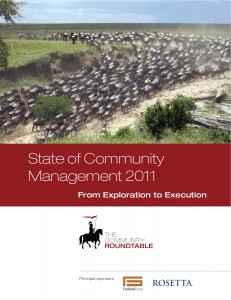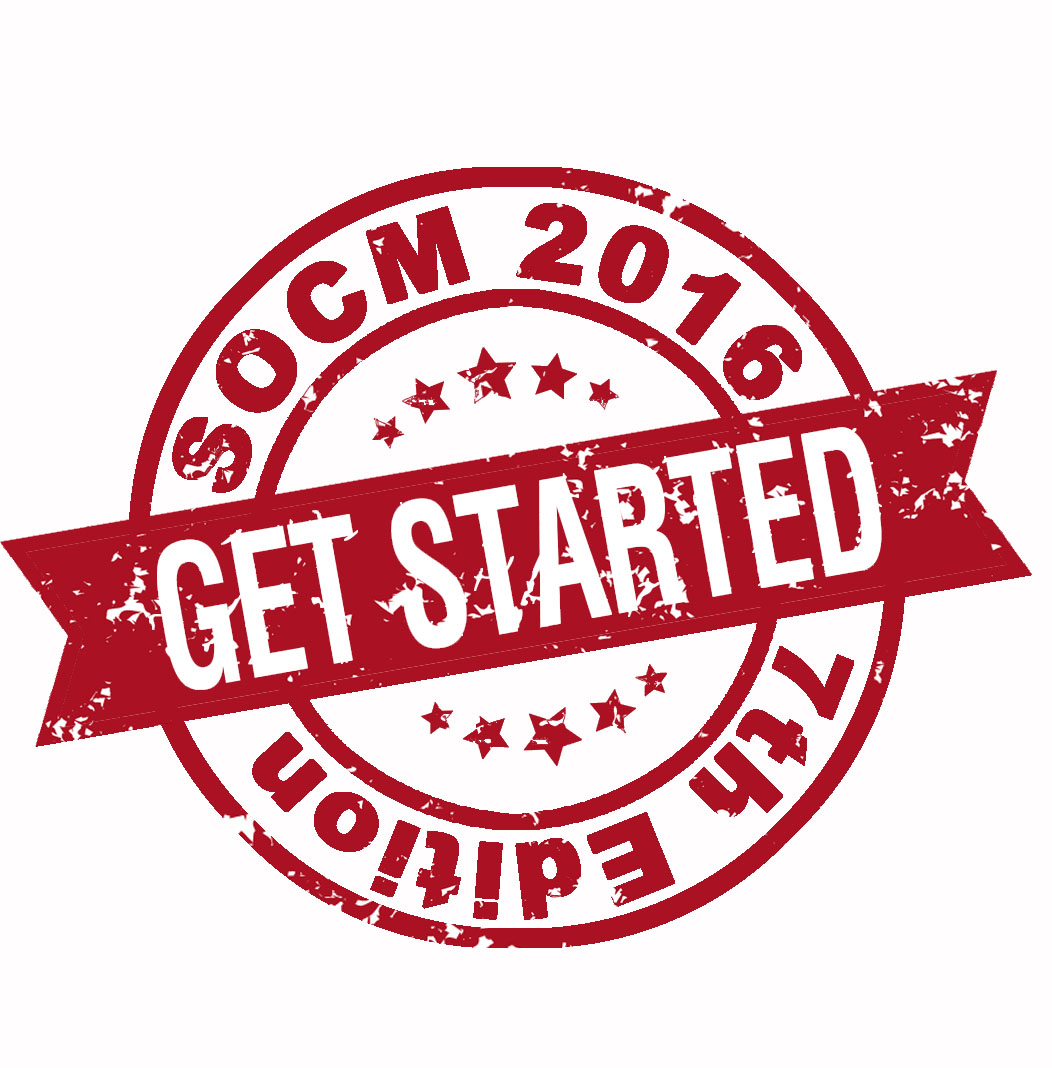By Ted McEnroe, Director of Research and Training, The Community Roundtable
As you know if you have been keeping an eye on the community management space for awhile, The State of Community Management 2016 is not our first time at the community management research rodeo.
In fact, SOCM2016 is our seventh report – so we thought it might be valuable to revisit our past reports, and as it turns out, there’s a lot more to them than just an annual update of how communities are doing.
 SOCM2011: Defining the discipline of community management
SOCM2011: Defining the discipline of community management
After the release of an initial report in 2010 was well-received by community professionals, there was no doubt we would make it an annual event.
What makes the 2011 report worth a read five years later is the framework it lays out for defining community management as a strategic discipline, and laying out some of the powerful and sometimes painful lessons learned by pioneering community professionals in a number of organizations.
Driven by interviews with dozens of community managers, the report highlighted the growth of communities and confusion about how communities work in the enterprise. The quantitative survey noted the challenge of creating a more open culture and the powerful impact community management could have on a community.
Sound familiar?
Among the takeaways worth noting in this groundbreaking report:
Strategy:
- Know your target member.
- To build community, you need a garden, not a sandbox.
- Community takes time.
Leadership:
- Community management isn’t a role – it’s a perspective
- Education is key to success
- Listening is an invaluable business skill
Culture:
- Establish behavior guidelines early
- Focus on cooperative goals
- Ask for the truth, even if it hurts
Community Management:
- Do not jump in and automatically help out
- Constructive conflict is required to innovate
- Lead by example and show members how you want them to behave
Content and Programming:
- Your content strategy needs to be focused on both your audience and your goals.
- If your goal is engagement, ask great questions.
- Set the tone. Consistency and cadence are critical.
Policies and Governance:
- Policies are legal terms; guidelines express the culture you want to promote
- Identify legal concerns early
- Have an escalation plan before you need it
Tools:
- Don’t feel you have to use every channel
- Prepare your community for changes and explain the ‘why’.
- Be aware of the grassroots efforts in your organization
Metrics and Measurement:
- Use different metrics to serve the needs of different audiences
- Using metrics to support a story maximizes impact
- Community investments and results are offset – the ROI of community takes time
This exhaustive list is only part of what came out of the 2011 research, and many of these ideas are central to the development of TheCR and the field of community management in the years since.
It makes the State of Community Management 2011 a report worth picking up – because the best ideas for your community don’t have to be new. They just have to work.
Be a part of writing the next chapter in community management.
Take the State of Community Management 2016 survey now at https://communityroundtable.com/socm2016survey.
